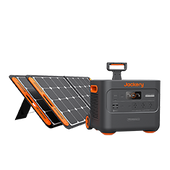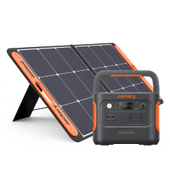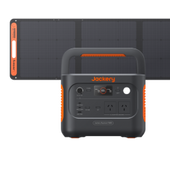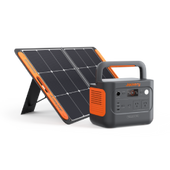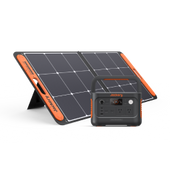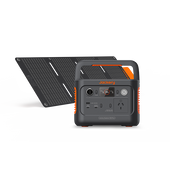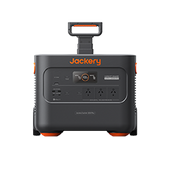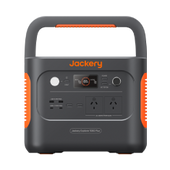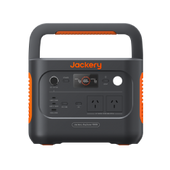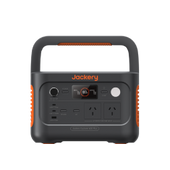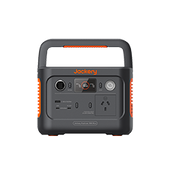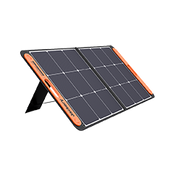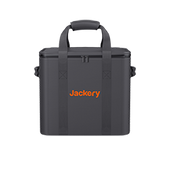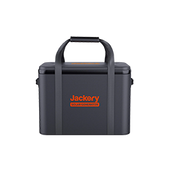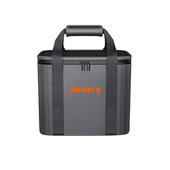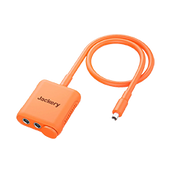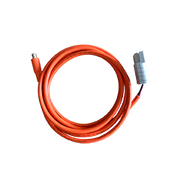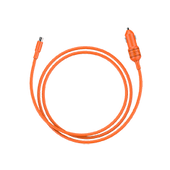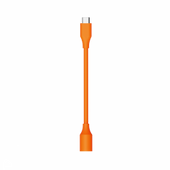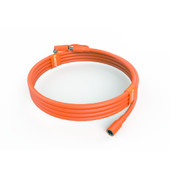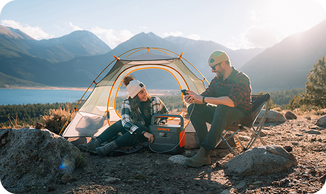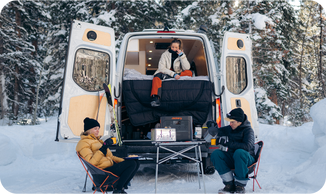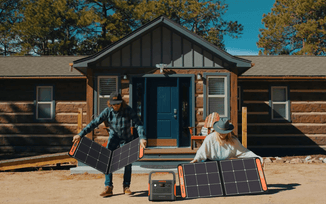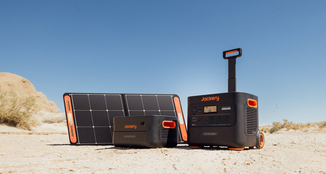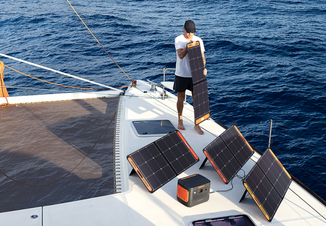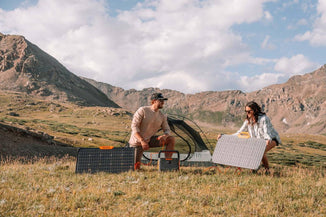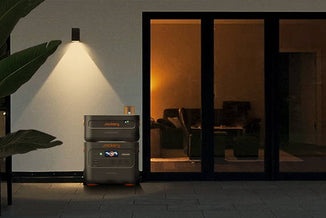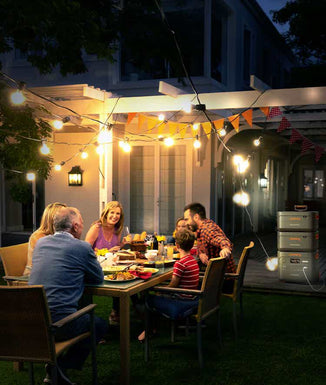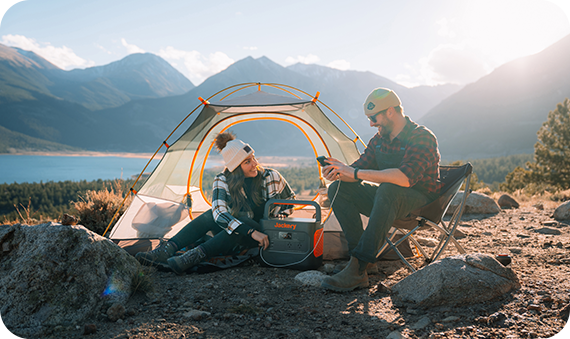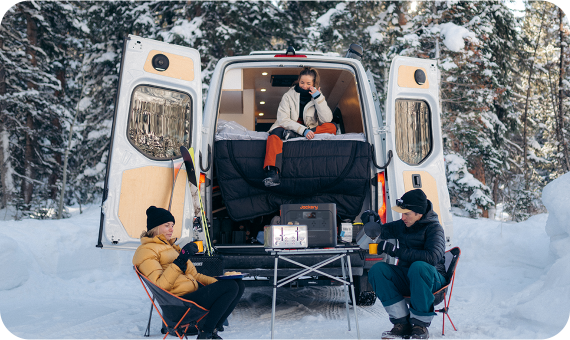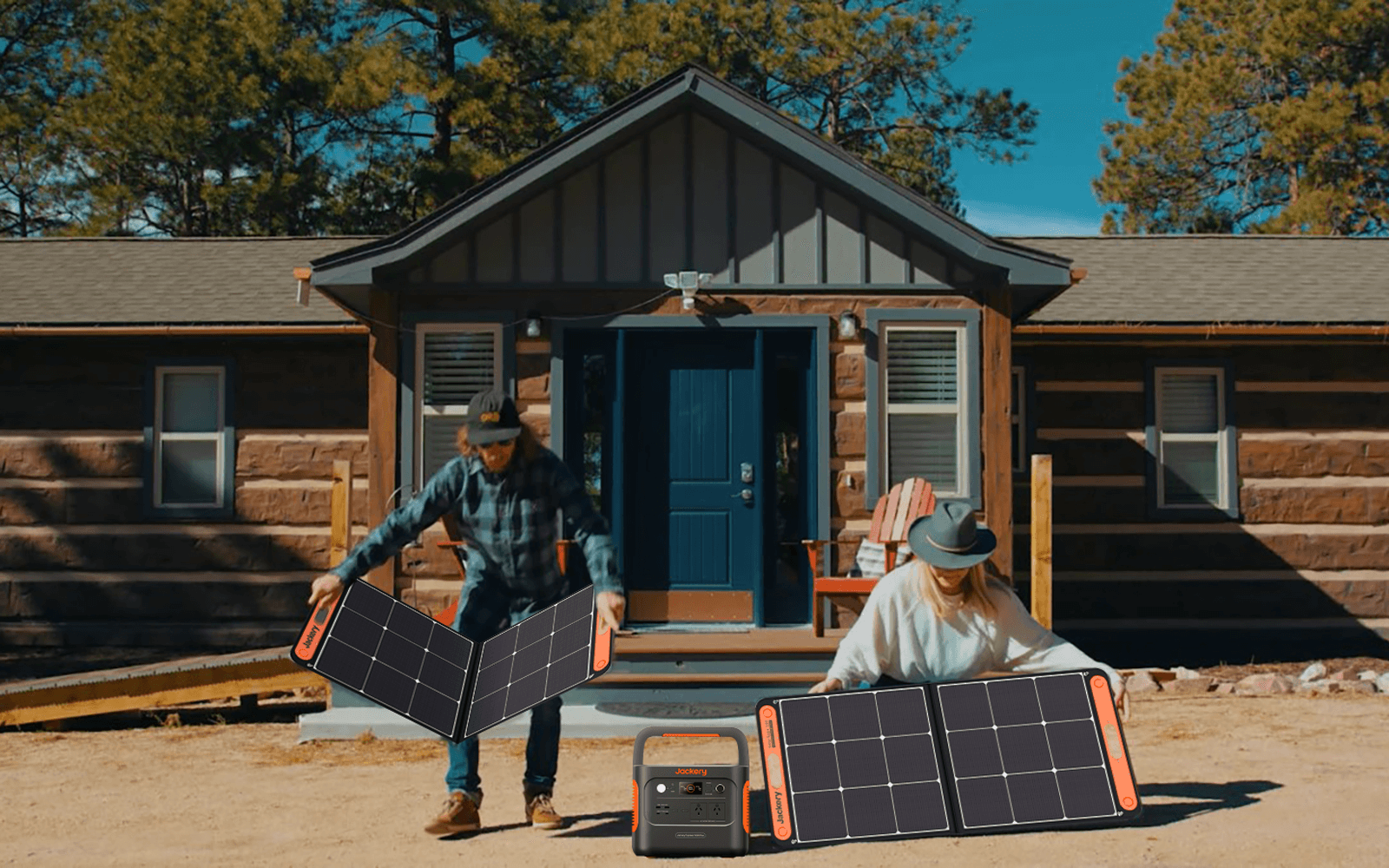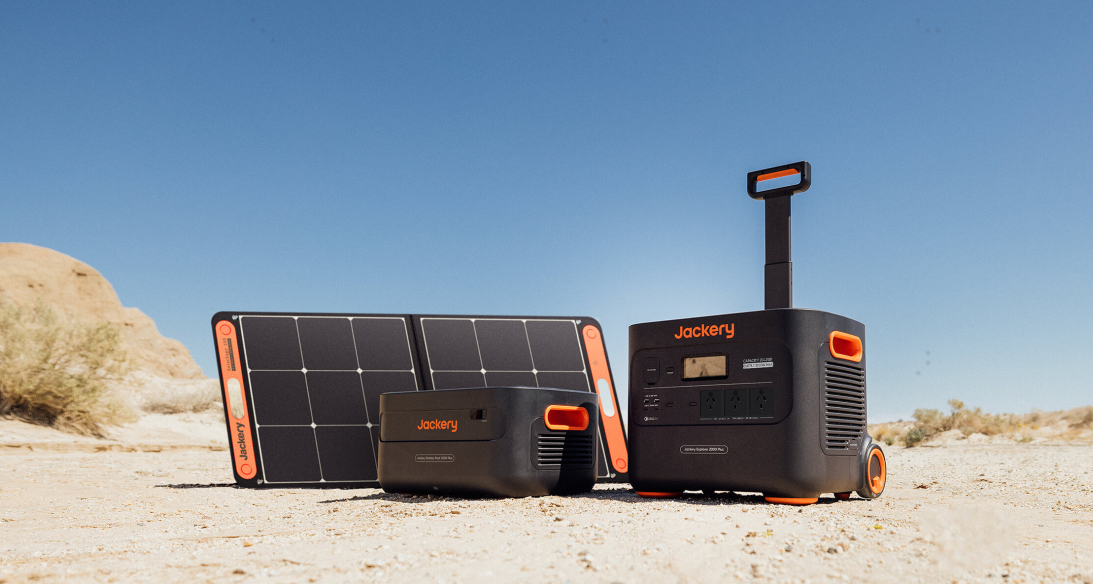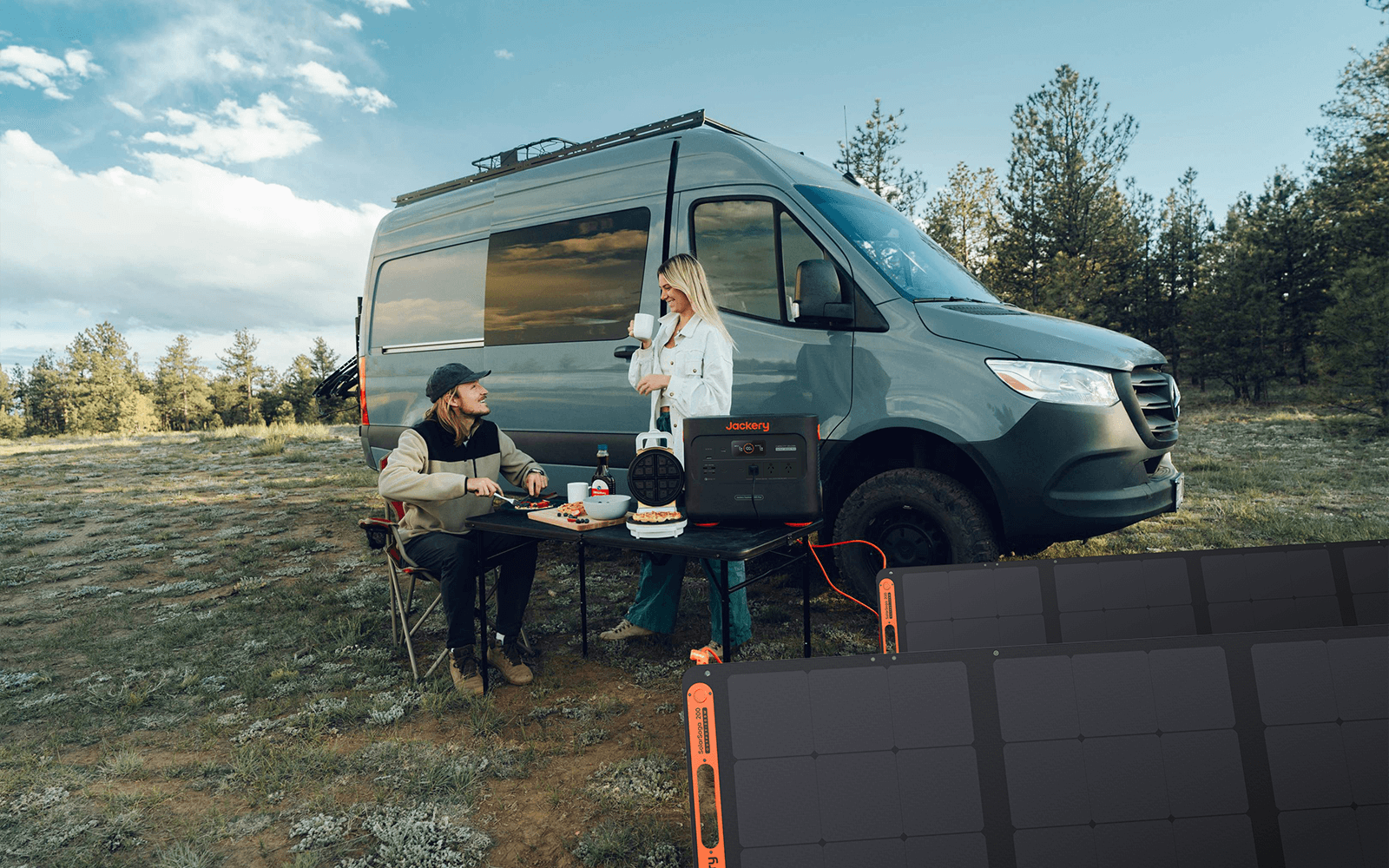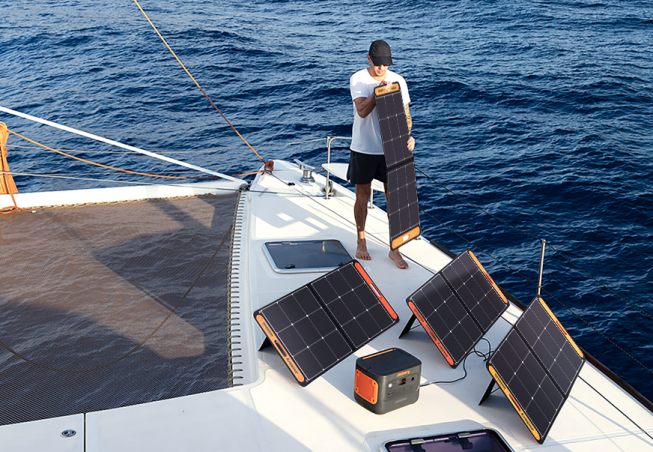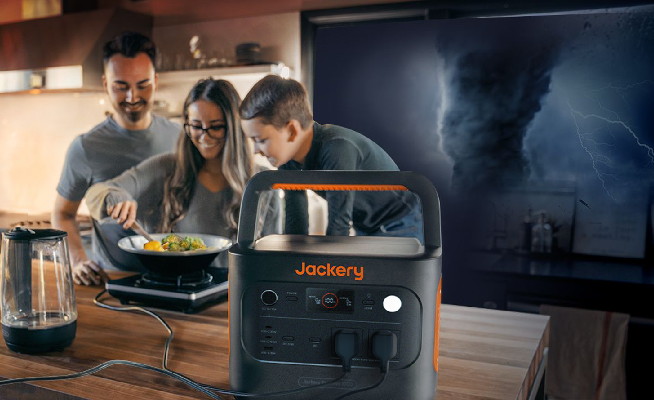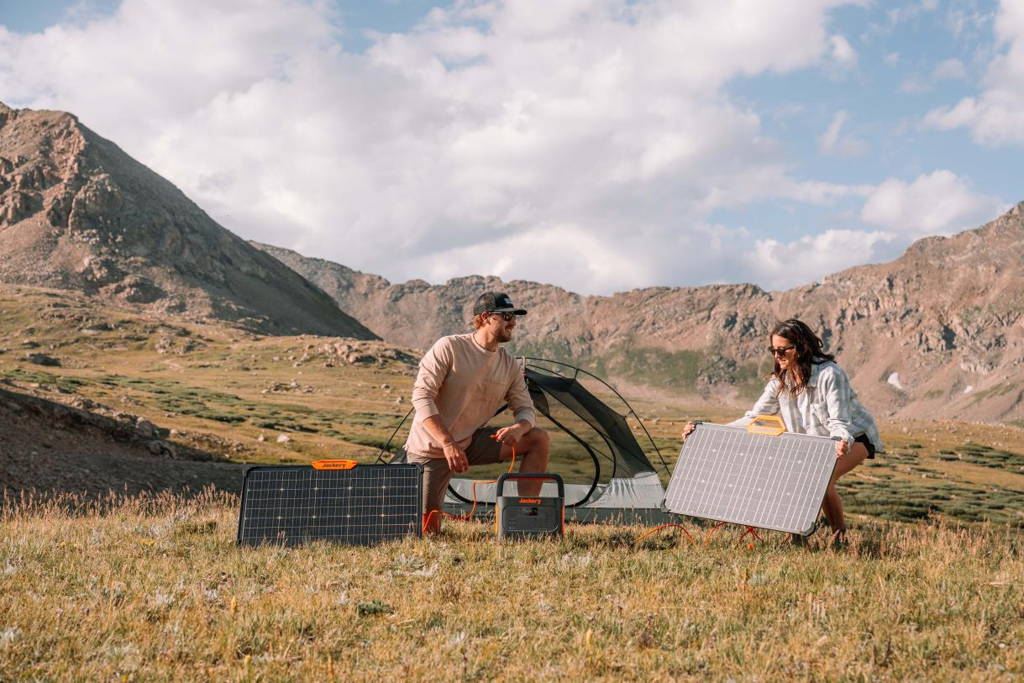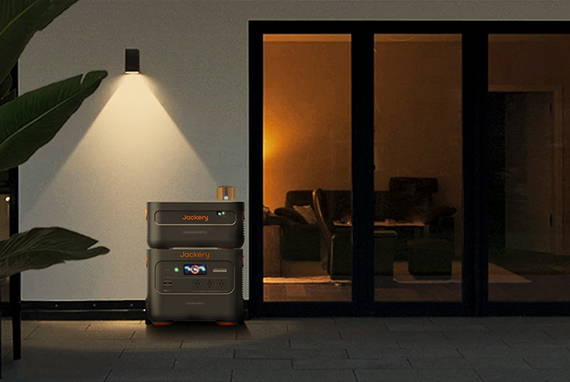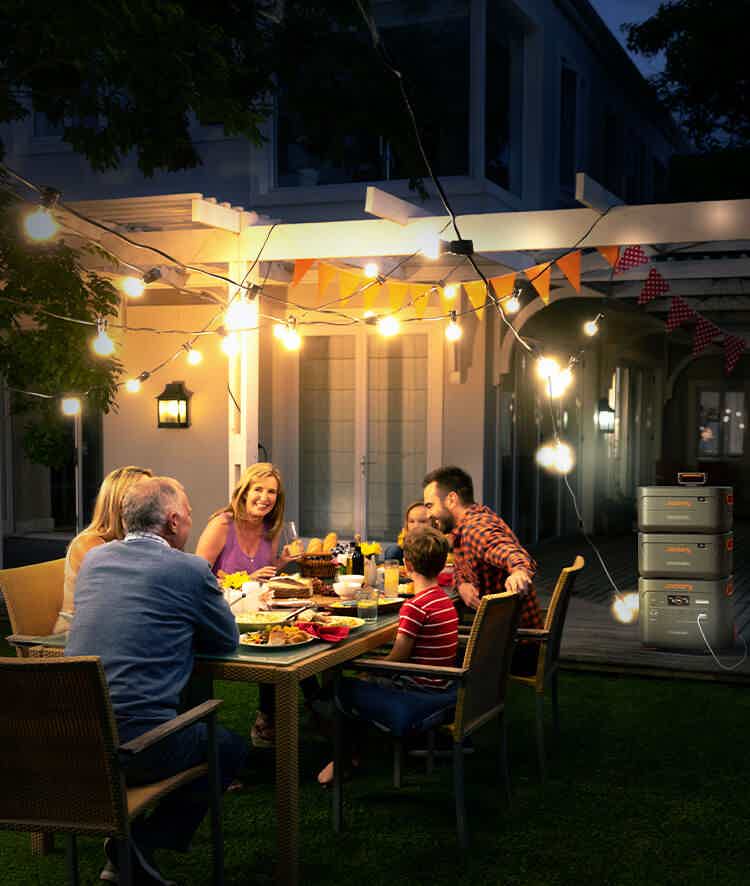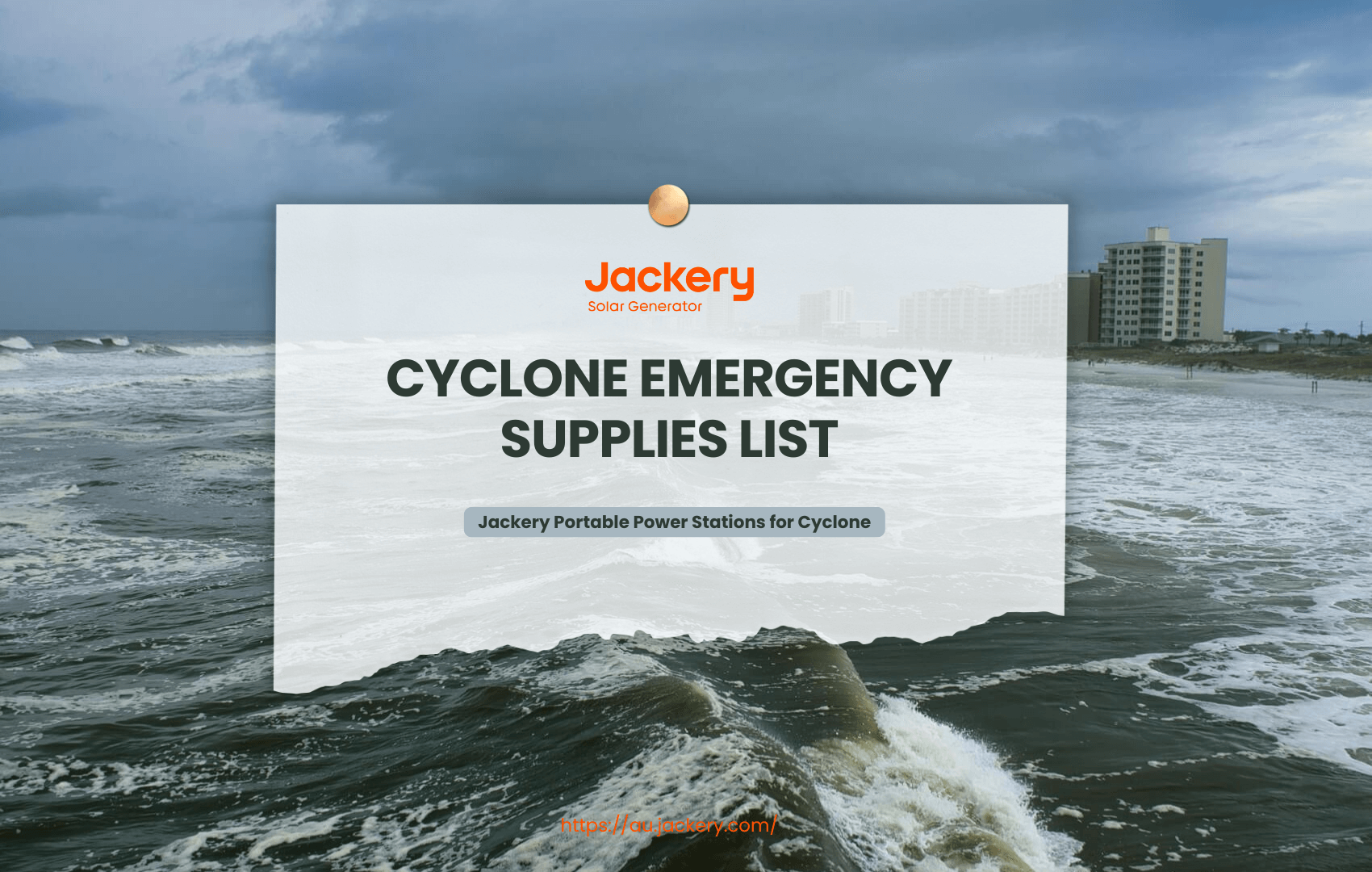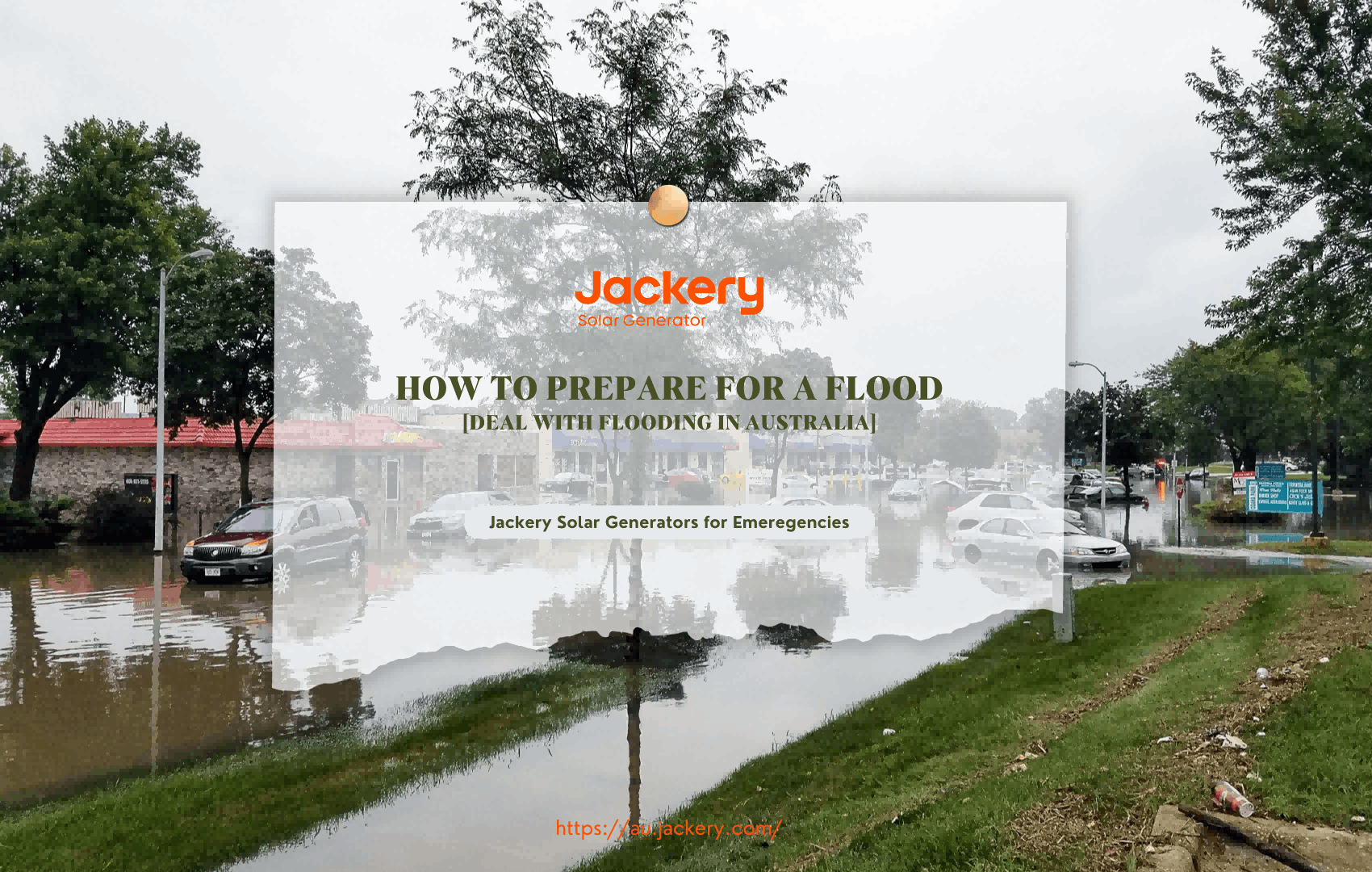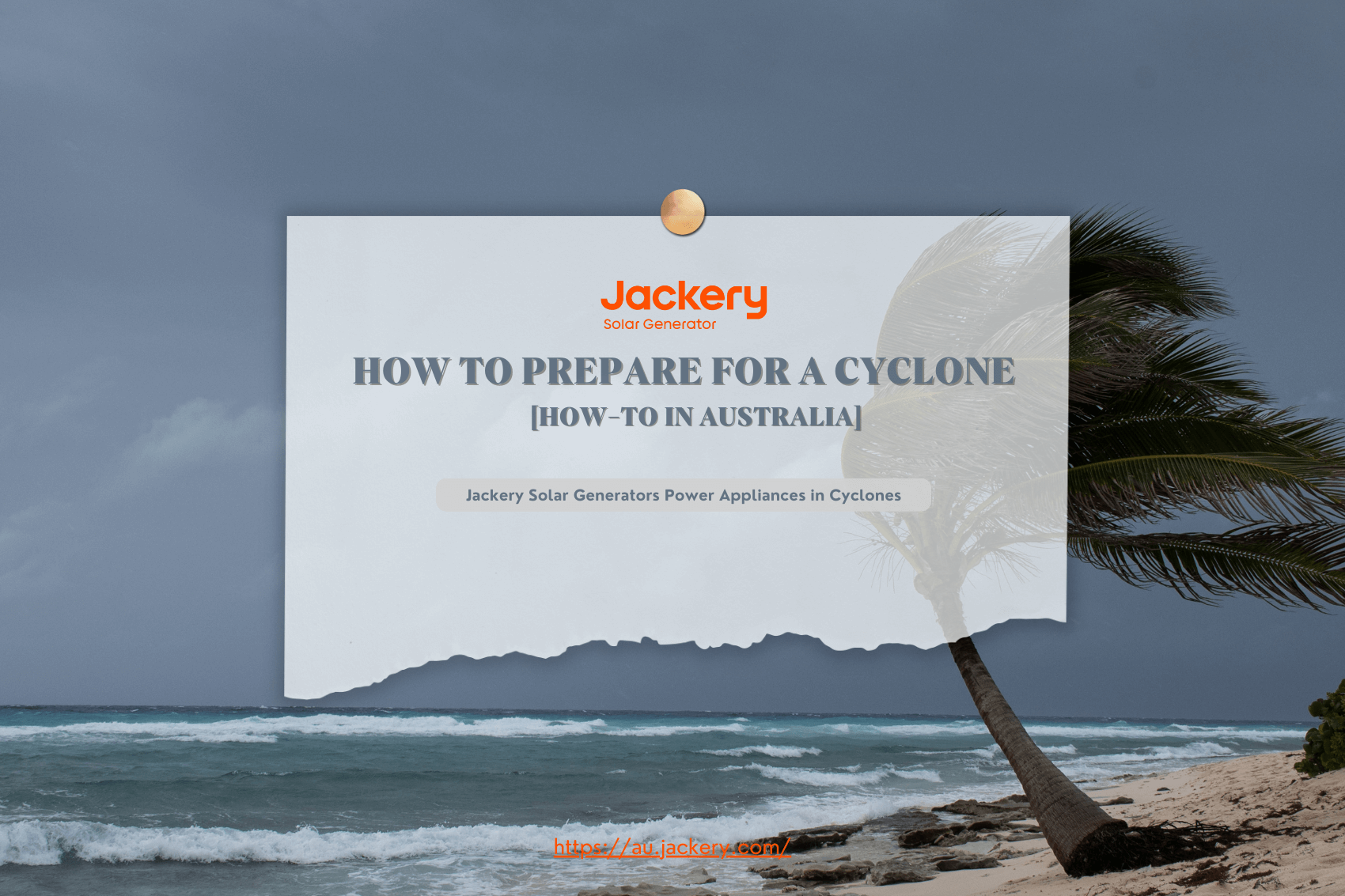|
Key Takeaways: |
|
- Floods in late March 2025 could destroy large amounts of farmland and cause the disappearance or death of hundreds of thousands of livestock in Queensland. - During flood-prone periods, visit local government emergency websites or disaster management departments for more flood information or warnings. - If the signal is available, call 132500 (SES) or 000 (in life-threatening situations) for emergency assistance. - Queensland communities affected by the rainfall and flooding in western Queensland in March 2025 can receive financial assistance for personal hardship. - We recommend the Jackery Explorer 1000 v2 as the ideal emergency generator for charging appliances and electronics. |
Overview of Floods in Queensland, Australia
Although floods are part of Australia's natural ecology and a common natural disaster, Queensland, Australia, has suffered several flood disasters since the beginning of 2025. Floods can cause significant damage to property and infrastructure, affect physical and mental health, and even cause casualties.
Infrastructure Damage
In Australia, floods often destroy roads, bridges, railways, power, and water supply systems. For example, in early March this year, Tropical Storm Alfred hit Australia's densely populated east coast, causing power outages for hundreds of thousands of households in southeastern Queensland and northern New South Wales. Floods directly paralysed cities such as Brisbane and the Gold Coast.
Property Losses
Many residential and commercial buildings were flooded during the floods, and property, such as furniture and vehicles, was damaged. The flooding of farmland led to crop failure and livestock death, which directly affected food supply and exports.
Relevant government officials said that the flood disaster at the end of March 2025 could destroy a large amount of farmland in Queensland and cause hundreds of thousands of livestock to be missing or dead. The economic losses caused by the flood disaster in Queensland, such as house damage, traffic disruption, and crop damage, are estimated to exceed hundreds of millions of Australian dollars.
Casualties
After severe floods, many residents were forced to evacuate, increasing pressure on the government's temporary resettlement sites. Floods can also cause fatal accidents, such as drowning and electric shock, resulting in casualties. For example, in early February 2025, thousands of people were forced to move to safe areas, and at least one person died after being hit by storms and floods in northern Queensland.
Environmental Damage
Floods can cause sewage, chemicals and garbage to flow into water sources, pollute rivers and oceans, and threaten drinking water safety. For example, during the Queensland floods in March 2025, the Georgina River, Thomson River, Bacoo River, Blue River and Cooper Creek suffered severe floods. Such large-scale floods can cause serious ecology.
How to Prepare for an Upcoming Flood?
Flooding is a common natural disaster that affects thousands of Australians annually, especially during the rainy or cyclone season. For example, in early February 2025, heavy rainfall caused by a tropical low-pressure system flooded northern Queensland.
This significant disaster caused house damage, traffic disruption, crop damage and at least one death. Therefore, responding to floods in time is difficult without a plan. Here are some preparations to help you effectively deal with flood risks.

Tip 1: Understand the Flood Risk
Confirm whether you live in a low-lying area, along a river, or a historical flood area. Then, we need to understand the severity of the flooding that may occur. In Australia, the severity of floods is often divided into three levels: minor, moderate and severe.
Minor Flooding: When minor flooding occurs, low-lying areas along the river are usually flooded, small roads may be closed, and low bridges may be flooded.
Moderate Flooding: Unlike minor flooding, moderate flooding floods a larger area and may affect significant transportation routes.
Major Flooding: Compared to moderate flooding, major flooding means that large areas of rural areas or urban areas (large areas of rural areas and urban areas) will be flooded.
During flood-prone periods, you can also use the local government emergency rescue website or disaster management department to check the flood risk map (such as the Queensland flood map) at any time to learn more about flooding.
|
Queensland |
|
|
New South Wales |
|
|
Victoria |
|
|
South Australia |
|
|
Western Australia |
|
|
Tasmania |
|
|
Northern Territory |
|
|
ACT |
Tip 2: Make an Emergency Plan
Before the flood, discuss with your family what to do during a flood, including evacuation routes, meeting points and contact information.
Evacuation Routes: Plan multiple escape routes to avoid areas prone to flooding, such as bridges and tunnels.
Safe Shelter: Choose a high and sturdy building (such as a school or community centre) for temporary shelter.
Back-Up Important Information: Store key documents such as ID cards, insurance policies, and bank account information in waterproof containers.
You can also use official government websites (such as the Queensland Government) to make a more comprehensive and realistic family emergency plan.
Tip 3: Stock Up on Emergency Supplies
A flood will most likely cause your home to lose power, water, and gas, so prepare a supply kit and store it in a safe place to have what you need if you are trapped. However, check supplies every six months to see if they are expired and ensure equipment (such as flashlights and radios) is in working condition.
|
A Flood Emergency Supplies Checklist |
|
|
Three days of non-perishable food Three days of drinking water First aid kit Radio Important documents Cash Sandbags Plastic sheeting Tape Portable power station |
Essential toiletries Warm clothing Paper towels Wet wipes Hand sanitizer Can opener Mask Sturdy gloves Waterproof bag First aid whistle |
This list is for reference only; please adjust it based on actual conditions.
Portable power stations, like Jackery Portable Power Stations, are particularly crucial for flood emergencies in Australia due to the country's vulnerability to these natural disasters. Australia experiences widespread and often severe flooding across various states, including Queensland, New South Wales, Victoria, and Western Australia. These floods can lead to prolonged power outages, isolating communities and disrupting essential services.
How to Save Yourself in a Flood?
In March 2025, a severe flood in Queensland caused rivers to flood, towns to be isolated, and people to be forced to evacuate. This severe flood caused rivers in the Channel region to overflow, flooding small towns and large pastures in southwestern Queensland. Faced with such a severe flood disaster, people should understand and master some self-help measures. The following are some self-help measures for floods analysed according to different scenarios.

How to Save Yourself from Floods at Home?
If a sudden flood occurs and you and your family are still at home, please pay close attention to the flood warnings issued by the meteorological department. Get the latest news about the flood anytime through TV, radio, mobile phone applications or social media. If necessary, take the following measures to survive the flood.
Measure 1: Cut Off the Source of Danger
If you notice the flood coming, immediately close the gas valve and cut off the main power switch to prevent leakage or gas leakage from causing a fire. If time permits, unplug electrical appliances and remove low valuables.
Measure 2: Move to a Higher Place
When a flood occurs, please go as much as possible to the pre-planned shelter area. If you are trapped and cannot evacuate, use sandbags or plastic bags filled with soil to block the door gaps and slow down the flood. Then, take emergency items and quickly move to the highest level of the house, such as the second-floor roof.
Measure 3: Emergency Help
No matter which state in Australia you are in, you can call 132500 (SES) or 000 (in life-threatening situations) for emergency help. If you cannot use communication equipment to call for help, you can use a flashlight, whistle, or bright clothes (red and yellow) to send a distress signal to the outside world.
How to Save Yourself from Floods in the Car?
When encountering floods in Australia, if you are trapped in a car, it is crucial to stay calm and take correct self-rescue measures quickly. Please remember that personal safety is always more important than the car. Please abandon the vehicle in critical moments and leave as soon as possible. The following are detailed self-rescue steps for being trapped in a vehicle by floods:
Measure 1: Calmly Assess the Environment
Please stay calm and quickly determine the water level (wheels/doors/roof) and the tilt direction of the vehicle. If the water level has not submerged the wheels, the car can still start and slowly drive to a higher place. If the water level has exceeded the lower half of the door (about 30 cm) or the height of the exhaust pipe, turn off the engine and prepare to evacuate.
Measure 2: Evacuate Immediately
After the car stops, unbuckle the seat belt immediately, open the central lock and leave the vehicle. If the door lock or electric window of the car short-circuits, use an escape hammer or sharp objects to break the window and escape.
Measure 3: Take Refuge in a Safe Place
After escaping, quickly go to high ground or a solid building to avoid being washed away by the water or contacting live electrical facilities. If no higher and solid high ground, trees, or buildings are around, climb onto the car's roof for temporary shelter.
Measure 4: Call for Help
If the signal is available, call 000 or 132500 for an emergency. If you have the Emergency+ app on your phone, you can provide the emergency operator with the location information (including latitude and longitude information) determined by your smartphone. If other methods of asking for help are not feasible, please wave bright clothes or turn on your phone's flashlight to ask for help.
How to Save Yourself from Floods Outdoors?
If you encounter a sudden flood outdoors, you must take some self-rescue measures to ensure your safety. The following are key self-rescue steps you can take outdoors to escape from floods:
Measure 1: Move to a Safe Area Quickly
If you encounter a flood in an outdoor area, avoid easily flooded areas such as rivers, drains, bridges, and underground passages. Immediately move to higher places, such as hillsides, high floors of solid buildings, flood shelters, etc.
If floods surround you, use floating materials around you to move or hold on to fixed objects (such as large trees and street lamps) to wait for rescue.
Measure 2: Avoid Wading
The speed of water in floods is much faster than visual judgment. For example, a 15 cm deep rapid can knock down an adult, and 30 cm deep water can wash away a vehicle. Never try to wade to escape because shallow water may also hide sewers, wires or sharp objects. If you must move, use a stick to detect the stability of the ground.
Measure 3: Prevent Secondary Disasters
Electrical failures often accompany floods, so please avoid collapsed power poles and live equipment in water in outdoor environments. You must also prevent bridges and dams, as these structures may suddenly collapse in floods. If you happen to be in mountainous areas, please avoid steep slopes, as landslides and mudslides are prone to occur after floods in mountainous areas.
Measure 4: Send Out a Distress Signal
If your mobile phone signal is available, call 132500 immediately (please call 000 in life-threatening situations), clearly stating your location and danger. In addition, the Emergency+ application can use the GPS function of your smartphone to provide emergency operators with the exact location of their smartphone.
If communication is interrupted, you can wave bright clothes or reflective objects to attract attention. If you travel with multiple people, you can shout or knock on metal objects to make noise and increase the probability of being found.

Jackery Explorer 1000 v2 for Flood Emergencies
Modern Australian life relies heavily on electricity for communication, lighting, medical equipment, refrigeration, and access to information. Power outages during floods can severely impact safety and well-being.
So, we highly recommend our brand-new product - Jackery Explorer 1000 v2, as a portable emergency generator that can power essential appliances and devices during a flood in Queensland or other areas of Australia.
What Can Jackery Explorer 1000 v2 Help during a Flood Emergency?
Building on the already impressive heritage of its predecessor, the Jackery Explorer 1000 v2 has become a strong rival in portable power solutions.
Maintain Communication: Keeping mobile phones charged is vital for contacting emergency services (SES on 132 500, or 000 for life-threatening emergencies), family, and friends for updates and assistance. Powering radios or small devices allows access to crucial news, weather updates, and emergency broadcasts, often provided by local ABC radio.
Provide Light & Safety: Floods often occur at night or during heavy rain, leading to darkness and dangerous conditions. Jackery Explorer 1000 v2 can power essential lighting, such as flashlights, lanterns, and even small indoor lights, improving safety and visibility within shelters or partially flooded homes.
Operate Medical Devices: For individuals relying on electrically powered medical equipment like CPAP machines, oxygen concentrators, or nebulisers, a Jackery Explorer 1000 v2 can be life-saving during an outage.
Preserve Food & Medications: Jackery Explorer 1000 v2 can power small refrigerators or coolers, helping to keep perishable food and essential medications from spoiling, especially during prolonged power outages.
|
Appliances |
Working Hours |
|
Phone (29W) |
34 Times |
|
Portable Refrigerator (60W) |
15H |
|
Laptop (80W) |
13 Times |
|
Flashlight (5W) |
43.9H |
|
CPAP Machine (100W) |
7.6H |
(*The working hours are only for reference; the actual working hours depend on your usage.)

Features of Jackery Explorer 1000 v2
The Jackery Explorer 1000 v2 Portable Power Station is engineered for mobile energy solutions. Weighing about 23.8 lbs and equipped with a compact foldable handle, it is more lightweight and portable than conventional items. Besides, it is 20% smaller and 10% lighter than mainstream products. This powerhouse conveniently fits into the back compartment for effortless storage, guaranteeing you are never without power.
Jackery's upgraded Power Station exhibits a 50% enhancement in power output compared to the previous Explorer 1000 model, with an AC output of 1500W. It charges 7.5 times faster, achieving a full charge in just 59 min through the Jackery App. The LiFePO4 battery exhibits a lifespan four times greater than conventional batteries, supporting 4,000 life cycles while maintaining over 70% of its capacity.
With a robust 1500W AC output and a surge peak of 3000W, this device can support various home appliances during an emergency, including refrigerators, lights, radios, medical equipment, etc. The device includes 100W PD Fast USB-C charging (both input and output) for efficient recharging, possesses a substantial 1070Wh capacity, and is designed in a compact size to optimise space utilisation.
The Jackery Explorer 1000 v2 offers rapid charging capabilities, achieving a full charge in 60 minutes when utilised with the accompanying application. The ChargeShield 2.0 system provides 62 types of safety protection and is CE-certified. It features comprehensive fire and shock resistance to ensure quality and optimal safety.
|
|
Explorer 1000 v2 |
|
Capacity |
1070Wh |
|
Battery Cell |
LiFePO4 |
|
Weight |
10.8 kg |
|
Size |
32.7 x 22.4 x 24.7 cm |
|
Recharge Life Cycle |
4000 cycles to 70%+ capacity |
|
APP Control |
Yes |
|
UPS |
UPS≤20ms |
|
Working Temperature |
Charge Temperature: 0~45C Discharge Temperature:-10~45C |
|
Quiet Level |
Less than 22dB |
|
Safety |
ChargeShield 2.0 10-Year Lifespan UL94 Fire Resistance Rating IEC60068 Shock-Resistant Level |
Recovery Measures After Floods Recede in Australia
Please follow the instructions of the local emergency department or local government and return to your residence only after the official declaration of safety. For example, after the February 2025 flood, the governor of Queensland said that the flood had not yet reached its peak and called on state residents to pay attention to emergency alerts. Even if the flood disaster alert is lifted, you must be extra careful during recovery.

Step 1: House and Infrastructure Inspection
Please check whether the house structure is stable, especially the foundation, walls, and roof. If you find hidden dangers such as cracks in the wall, loose foundations, exposed wires, etc., please get in touch with professionals for repairs.
Floods may carry chemicals, sewage or harmful organisms (such as snakes and insects), so please wear protective equipment such as gloves, masks, and rubber shoes when inspecting.
Step 2: Property Loss Assessment and Insurance Claims
Although Australian home insurance usually covers flood losses, you must check the policy terms. If there is an insurance claim service, take detailed photos of the damage to the house, vehicle, and belongings as evidence of insurance claims. After recording the damage to the house, you need to contact the insurance company as soon as possible to understand the claims process.
Step 3: Clean and Repair
You need to clean the drainage system and unclog the blocked sewers and rainwater pipes to prevent water from accumulating again. Then, clean up the residue inside and outside as soon as possible to avoid mould growth. After cleaning, use professional disinfectants to wipe the floor, walls, and items, and ventilate and dry them.
After thorough cleaning, use dehumidifiers and fans to speed up drying. If mould growth is serious, please hire a professional mould removal service. If clothes, books, furniture, etc., cannot be thoroughly cleaned, discarding them to avoid health risks is recommended.
Step 4: Seek Government Financial Assistance
After a major natural disaster, most local governments or non-profit organisations will provide some financial assistance to residents who have suffered severe losses. For example, Queensland communities affected by the rain and floods in western Queensland in March 2025 can receive personal hardship financial assistance.
The following are areas that can receive financial assistance due to the March 2025 Queensland flood disaster:
|
Region |
More Details |
|
Barcaldine Regional Local Government Area |
defined localities(Aramac and Muttaburra) |
|
Barcoo Shire Local Government Area |
All areas |
|
Bulloo Shire Local Government Area |
All areas |
|
Longreach Regional Local Government Area |
All areas |
|
Paroo Shire Local Government Area |
All areas |
|
Quilpie Shire Local Government Area |
All areas |
|
Winton Shire Local Government Area |
All areas |
(Data Source: qld.gov.au)
The above information is for reference only. To learn more, please visit the qld.gov.au website. Please confirm whether you meet the conditions and qualifications if you want government subsidies.
Step 5: Mental Health Recovery
Flood trauma may cause anxiety, insomnia or post-traumatic stress, so talk to your family and friends or seek help from a counsellor. For example, community rehabilitation centres can provide physical and mental health support for residents experiencing difficulties. Here is
information about some community rehabilitation centres in different areas of Queensland:
|
Region |
Community Recovery Centres |
Address |
Operating Hours |
|
Barcoo Shire Local Government Area |
Jundah Community Recovery Pop-up Hub |
11 Dickson Street, Jundah |
10am to 2pm daily |
|
Bulloo Shire Local Government Area |
Thargomindah Community Recovery Pop-up Hub |
68 Dowling Street, Thargomindah |
9am to 4pm daily |
|
Longreach Regional Local Government Area |
Longreach Community Recovery Hub |
117 Eagle Street, Longreach |
9am to 4pm daily |
|
Paroo Shire Local Government Area |
Cunnamulla Community Recovery Pop-up Hub |
49 Stockyard Street, Cunnamulla |
9am to 4pm daily |
|
Quilpie Shire Local Government Area |
Quilpie Community Recovery Hub |
50 Brolga Street, Quilpie |
9am to 4pm daily |
(Data Source: qld.gov.au)
If you need help but there is no community rehabilitation centre nearby, or it is closed, call 1800 173 349.
Australia Floods FAQs
The following are the frequently asked questions about the unprecedented flooding in Queensland, Australia:
1. What causes floods?
Heavy rainfall over a long period of heavy rainfall over a short period is the leading cause of floods. Severe thunderstorms and tropical cyclones are Australia's leading causes of frequent floods. In addition, mudslides or dam breaches may also cause floods.
2. What adverse effects do floods cause?
In general, floods cause the following adverse effects:
Damage to crops and livestock
Damage or destruction of roads, buildings and other infrastructure
Casualties and deaths of residents
3. When did the worst floods in Australia occur in recent years?
According to eehotwater.com.au, the worst floods in Australia in recent years occurred from February to March 2022. The affected areas were southeast Queensland, Wide Bay-Burnett, the Western Downs of Queensland, and northern New South Wales. In this flood disaster, 22 people were confirmed dead, and the economic losses were about $4.3 billion.
4. How many days do floods last?
The duration of floods varies greatly depending on the region, climate, terrain, etc., usually ranging from a few hours to weeks or even months. Short-term flooding, such as flash floods, usually lasts from a few hours to 1 to 2 days.
Seasonal floods in tropical monsoon areas may last for weeks to months. For example, the extreme rainfall in New South Wales in February 2023 stayed for a week, and the subsequent flood receding was extended to more than two weeks due to high river water levels.
Final Thoughts
In short, floods, as a type of natural disaster, significantly impact residents' lives and the government's construction. Even if the Australian government responds to floods through early warning, post-disaster subsidies and infrastructure upgrades, climate change has led to frequent extreme weather, and future challenges remain severe.
For example, the eastern coast of Australia and Queensland are affected by the La Nina phenomenon and monsoon all year round, making the occurrence and duration of floods challenging to predict. As residents in flood-prone areas, only by preparing in advance can we effectively respond.

